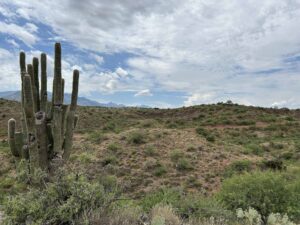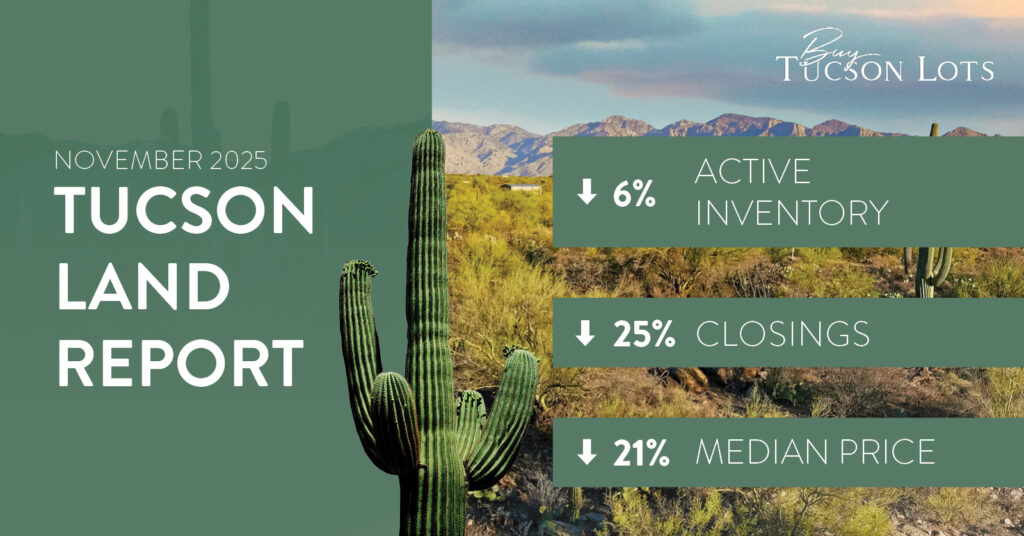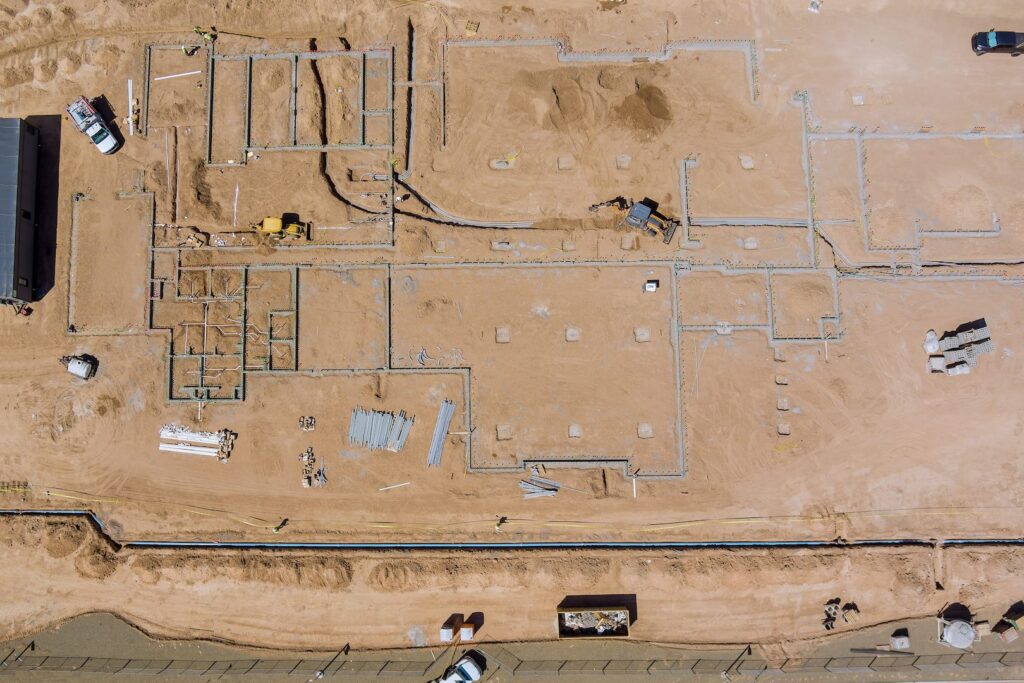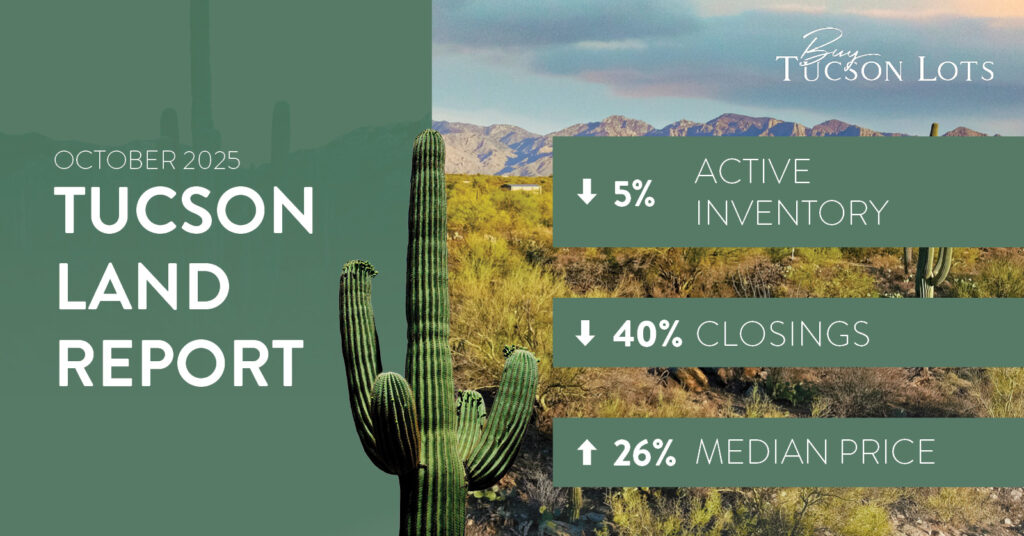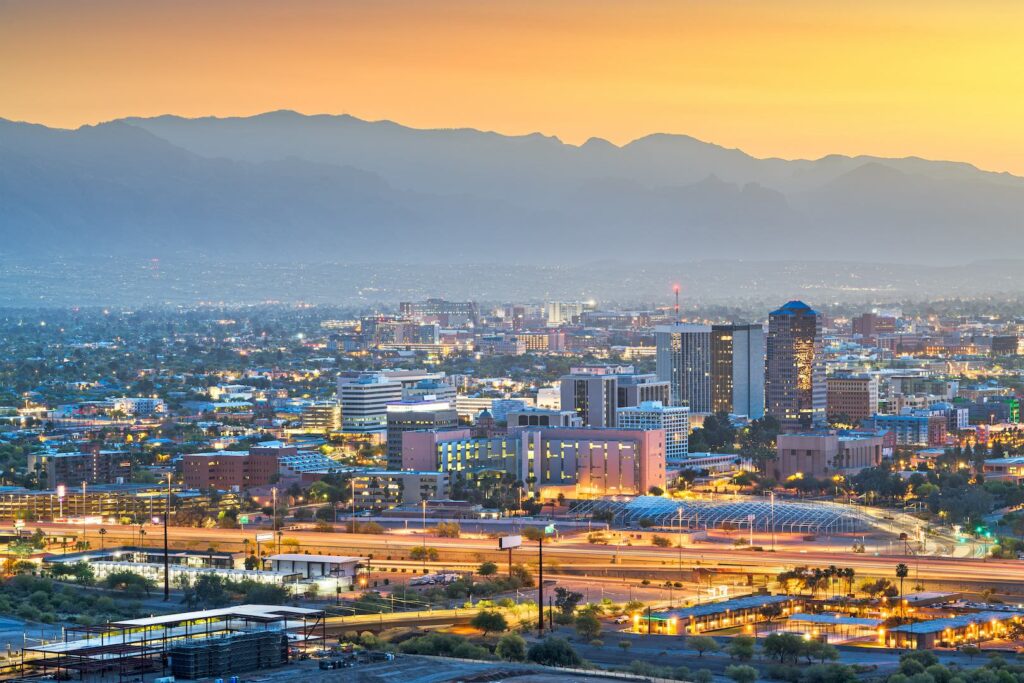While searching for vacant lots in Tucson, one feature that frequently gives lot buyers pause is the presence of a wash on a prospective property. As a homesite and land specialist in Tucson for many years, here’s what I’ve learned: when it comes to washes, the more you know about them, the less there is to fear!
Understanding how washes work, knowing what is required when building on a lot with a wash, and why they are considered desirable can help you make an informed decision when buying Tucson vacant land. I’m here to share knowledge and inspire confidence for your vacant lot purchase, so let’s demystify washes and dispel your watershed worries!
Washes, also known as arroyos, are a natural—and useful—part of Tucson’s topography. These dry stream beds can vary significantly in size and function and cover much of Tucson’s land. When filled with water, major washes are supplied primarily by mountain run-off and minor washes collect water from local weather.
You can expect washes to fill consistently during summer’s humid stretches and monsoon season in late summer/early winter. Think of washes the way you would a system of veins, like your circulatory system: when temperatures increase in spring, the snow accumulated in the mountains melts, and the water channels into smaller veins in expanse across the region.
Many lot buyers who aren’t familiar with the desert immediately think, “Oh no, I can’t consider any property that has water coursing through it.” Yet washes are the land’s natural solution to water dispersal, allowing flow during periods of excess. They’re truly considered a desirable feature on Tucson lots, and I’ll talk more about that in an upcoming post.
And because washes are such a common part of the terrain throughout the Tucson basin, Pima County hydrologists and engineers have created a series of regulations for land development based on continuous monitoring and study of the area’s floodplains. And Pima County Flood Control also works to remove obstacles to ensure proper water flow and to prevent flooding during Tucson’s rainiest seasons.
When I represent a buyer who has concerns about the size of a wash on a particular property, I refer them to a hydrologist to help them determine the property’s risk. Hydrologists offer suggestions on where to build on a vacant lot with respect to its watershed and can provide additional knowledge and reassurance for buyers.
When lot buyers decide to purchase land, each person has a list of fears and unknowns, but all questions can be answered when you choose to work with the right homesite and land specialist. Connecting clients with a network of professionals to help them do their homework is my priority.
In my next post, I’ll be talking more in detail about regulated and non-regulated washes, and how setbacks set you up for success. To subscribe to my blog for more updates about vacant land in Tucson, click here. To contact me directly, send me a message here. I look forward to talking lots with you!



